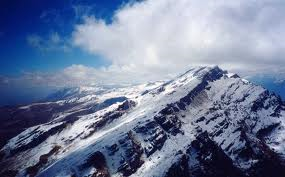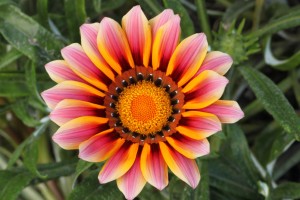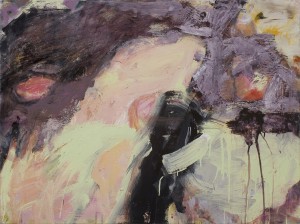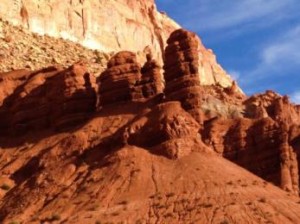Blog
Jungian Psychology and Andean Medicine: Coming Full Circle
Added July 11th, 2014 to Shamanic Practice, Therapy practice, Uncategorizedby Deborah Bryon
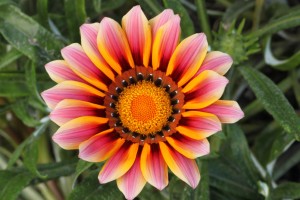 Awhile back, I began writing about integrating Jungian Depth Psychology with traditional Andean medicine[1] through the lens of a Jungian analyst and shaman (Andean medicine people use the term paqo which I will also use in this article). I wanted to find a way to unify these two different but important areas of my life together in some sort of cohesive framework.
Awhile back, I began writing about integrating Jungian Depth Psychology with traditional Andean medicine[1] through the lens of a Jungian analyst and shaman (Andean medicine people use the term paqo which I will also use in this article). I wanted to find a way to unify these two different but important areas of my life together in some sort of cohesive framework.
Jung wrote, “There is no consciousness without discrimination of opposites.”[2] Although I found similarities between Depth psychology and Andean medicine, I was able to pinpoint what I considered to be some significant distinctions. I decided that these discrepancies were because the practice of Andean medicine is a somatic experience that happens through energetic connection with the natural world. I viewed the inner journey of individuation as intrapsychic process of connecting with archetypal energy through imagery and symbolism.
From an Andean paqo’s perspective, symbolic imagery is not necessary for spiritual transformation to occur because a paqo accesses energetic life force directly in their body – primarily through the energy centers of the Belly, the Heart, and the third eye in the Mind.[3]
At the time, I wrote the following passage,
One of the ways shamanism differs from Jungian Psychology is that it is a “bottom up” approach. Growing up in a village, or ayllu, paqos learn to rely on their hearts and bellies rather than their brains to make sense of the world and find connection with Pachamama (Mother Earth). For p’aqos, the energy centers of the Heart and the Belly are equally important – perhaps opening the door for even a strong connection experience than the energy center of the Mind. Working with all three energy centers provides paqos with a deeper and broader range of perception.
Trying to understand everything using our logical mind is not necessary. It can even hinder our growth because we miss things. Things exist in the natural and spiritual world that cannot be understood using reason. As Westerners, we sometimes “throw the baby out with the bath water” when we count on our logical minds to determine what is real. The medicine people believe that thinking about something brings separation while a heart-centered focus of kausay brings connection. Paqos believe that feeling connected through the heart and belly leads to truth.
Paqos rely on the energy body, as the primary mechanism for integrating numinous experience – not the ego. Although energy is felt as a somatic body state, it is different from the subtle body that Jung described. This is because it exists as an aspect of a collective energetic connection, with kausay pacha (the collective middle world that we live in), and is not only a relationship between the individual psyche and soma.
I concluded that Jungian psychology differed from Inca shamanism in the following ways: 1) In Jungian psychology, numinous experience is integrated as an ego function through connecting with the Self through the ego/Self axis, verses as a somatic experience processed in the energetic body; 2) In Jungian psychology, emphasis is placed on individual rather than collective experience in the community; 3) Shamanism is primarily experienced in the Heart and Belly, rather than with the Mind; 4) Shamanism is a practice that occurs in direct relationship with nature.
[1] The term medicine is synonymous with healing for Andean paqos.
[2] “Psychological aspects of the mother archetype,” CW 9i, par 178.
[3] I will capitalize Belly, Heart, and Mind to refer to the respective energy centers in these locations.
The Collective of the Land: Pacha Mama and Jungian Psychology by Deborah Bryon, Ph.D.
Added June 30th, 2014 to Therapy practiceby Deborah Bryon
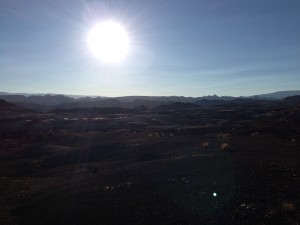
In Peru, the “collective of the land” or pacha mama, is the energetic realm that shamans “source,” or derive power from, existing outside of time and space. Similar to “the Force” in star wars, “the land” is the collective subtle body existing between all living things. In a Jungian analytic framework, similar to the individual subtle body, what Peruvian shamans refer to as “the land” contains both physical reality and the psychoidal realm. Through the experience of the land, the psychoidal experience “crosses over” from energetic realm into the imaginal realm and physical existence. For the shaman, the land helps to anchor the experience into a “perspective” the ego can more easily assimilate into conscious awareness. Because psychoidal experience lies beyond consensual reality, it is difficult for the ego to understand and integrate the knowledge into a consistent framework without a marker or point of reference. Shamans have an easier time flexing and bending their egos to accommodate the energetic information coming in because of the cultural belief system that supports it. This is because they are able to stay open to the actual experience rather than being caught in the trap of describing it intellectually.
An aspect of collective energetic experience of “the land” corresponds to Jung’s definition of the “objective psyche,” which he said was the unit or layer existing underneath the sum of the archetypal structures.[1] Both Jung and Von Franz have described this as the existence of an anthropos, “the ancient idea of an all-extensive world-soul, a kind of cosmic subtle body.[2]” Jung has also referred to this as the unus mundus, or “one world,” which is a “composite universal Self” exists in what he called “the psychoidal realm,” the central ground of empirical being, existing beyond time and space.
In her description of the objective psyche, Von Franz stated, “As this central unified area of the unconscious is approached, time and space are increasingly revitalized. That deepest area of the unconscious that is simply a unit or the center may be therefore understood as omnipresent continuum omnipresence without extension.” [3]Like the “home tree” in the film Avatar, at this deep level the psyche the unus mundus is not divided in individuals, but is connected with all living things.
A shaman moves into a state of connectivity with the collective of “the land” – or energetic collective – by experiencing through his or her own individual subtle body, which becomes the conduit into experiencing on a much greater, collective scale. The land is the medium of shifting into the experience of collectivity, from an individual to the universal state of the unus mundi. The shamanic collective as an energetic expression contains the archetypes, and is the unlimited depository of man’s universal psychic heritage. In Peruvian shamanism, the collective of the land, is similar to the collective unconscious in the psyche; it is the depository of all experience in nature, and is linked to “membership,” and an affiliation with a sacred mountain. The concept of affiliation with a mountain is similar to the function of Christ in the Christian religion as a link to God. The mountain as a collective spirit is a “bodhisattva,” an intermediary between the person and the collective. The mountain is an active expression of pacha mama, the great earth mother, which I will be explore in more depth in Article V.
This leap from the personal to the energetic collective requires creating and facilitating a shift in conscious awareness. I believe that the shamanic definition of the collective goes deeper than what some Jungians refer to as the collective psyche. Shamanic experience goes beyond the understanding through the mind, into somatic experience of collective through the body at a nonverbal, pre-image, energetic level. In shamanism, the ego is not a necessary component of the equation needed to “take in” the experience.
The ego requires separation as a means of defining itself – in order to exist. Because the ego does not have the capacity to move beyond a conscious state of separation, being in a state of fluidity requires connecting with something greater and vaster than the ego. The body is both the vessel that holds energetic experience and the receptor of this experience. Shamans teach that experiencing through the belly enables one to enter a state of fluidity, a state of no separation. This state of fluidity corresponds to the Taoist experience of being in the flow and in balance with the energy around us. Connecting with the land and sensing through the belly, are means of linking to the “source” of the collective – which is the shamanic definition of empowerment. It is an active way to experience the numinous presence and power of the Self that is not a function of the ego.
In Peruvian shamanism, “the heart” – as an expression of connection with pacha mama– is the hub of connectivity in the body and the vehicle through which connection and relatedness with others is experienced. Peruvian shamans say that the heart is where we experience munay energetically, the universal feeling state of love connecting us to the land and every living thing around us. The experience of munay refers to a state of union or an experience of a major conjunctio. It is collective state of love, different from personal love directed specifically towards another person.
Von Franz and Jung both referred to an aspect of this experience as “union through the Self.” Von Franz has written,
“Whereas relations based merely on projection are characterized by fascination and magical dependence, this kind of relationship by way of the Self has something strictly objective, strangely transpersonal about it. It gives rise to a feeling of immediate, timelessness, “being together” (p.177). [5]
Von Franz’s statement about relationships via the Self corresponds to the Q’ero description of munay. Both, are ecstatic spiritual experiences of connecting with the numinous that transcend time and space. Jung stated, “Objective cognition lies behind the attraction of emotional relationship; it seems to be the central secret. In this world created by the Self, we meet all those many to whom we belong, whose hearts we touch; here “there is no distance but immediate presence.”[6]
Lionel Corbett[7] has written about a glutinum mundi, or glue of the world, a “life force, uniting body and soul (Jung, 1968, 12, par 209). According to Corbett, this glue is the bonding material or prima materia of the conjunctio – a “secretion of the Self.” As presented earlier, this has also been described as a conjunctio experience between peoplein relation to the field within the analytic container, in the context of transference and counter transference. The experience of the field as a conjunctio experience can also occur outside of the analytic container, often in contexts such as ceremony or communal religious settings. The power of a group in creating an energetic field is well-known and practiced in meditation circles and monasteries around the world.
In Egypt, I had the opportunity to watch whirling dervishes perform and enter a state of ecstasy. Sitting in the room during a ceremony, I witnessed a vibration shift in the entire energetic field of over 100 people! Chanting and drumming rituals and tribal dancing are illustrations of similar phenomena. Pentecostal churches with members of a congregation who speak in tongues, the emotional charge present created by a group of gospel singers. Modern raves are another example seen in current Western culture of people collectively becoming mesmerized.
[1] E. C. Whitmont, “The Alchemy of Healing.”
[2] M.L. Von Franz, “Projection and Recollection in Jungian Psychology,” (p.85).
[3] Ibid. (p.84).
[4] K. Pribram, “What the Fuss is all About,” in The Holographic Paradigm, Boulder, Shambala, 1982 (p.34)
[5] M. Von Franz, “Re-Collection and Projection.”
[6] C.G. Jung, “CW Vol 8” (par 912).
[7] L Corbett, “Fire in the Stone,” (p. 125)
CREATIVE INTENTION USING WATER COLORS
Added June 12th, 2014 to Resourcesby Deborah Bryon
Spontaneous acts of creative expression, making art without thinking about it, are another way to bring the energetic experience into conscious awareness through physical manifestation. Creative activities such as writing or painting are ways of continuing a dialogue with numinous experience and deepening the capacity to hold kausay. The process of creative expression can contain the heat of the energy and both a catalyst and a vehicle for self-reflection and collective service.
EXERCISE: CREATIVE INTENTION USING WATER COLORS
Before beginning this exercise, gather the art supplies needed for watercolor painting that are listed below:
Watercolor paper with enough texture to hold water and color pigment
A thick brush (Japanese ink brushes are inexpensive and work well)
A pallet of cold-pressed watercolor paints
A cup of water
Paper towels
A sturdy surface such as a table, board, and pad to place underneath the paper.
Find a quiet and comfortable place to sit, in your home or in nature. Close your eyes and take a few deep breaths. With each exhale, feel yourself sinking deeper into your body, becoming more fully aware of any sensations you may be experiencing. Take a few moments sitting and breathing through your belly, centering yourself by experiencing the sensation of inhaling and exhaling.
As you feel yourself becoming more fully centered, begin to attune to any sensations you are experiencing. As you sit with these sensations, notice if they are tied to any emotions such as emptiness, expansion, tightness, fullness, numbness, etc. – whatever comes into your awareness without any preconceived notions. Sit with the feelings for a moment, observing and giving your body an opportunity to “voice” what it is currently holding. Lean into the feelings, magnifying and intensifying whatever it is that you are experiencing so that it becomes more pronounced in your outer awareness.
When you feel that a channel of communication has opened up so that you are holding your body experience in your conscious awareness, open your eyes.
Now, begin expressing this body experience with the watercolors. First, dip your brush in the water and saturate the paper with the water. After removing excess water from your brush, using your intuition, without any preconceived notion, allow the sensations to direct you to the colors of the palette that best convey the feeling. Allowing yourself to paint automatically without thinking. Use colors that you are drawn to. As you begin to apply the paint to the paper, let the sensation that you are experiencing in your body direct the paint strokes. Paint what you are feeling, focusing on the process of expressing what you are feeling, without concern for the outcome. This painting is a record of your current experience.
If you are feeling constrained, work with multiple sheets of paper simultaneously or shift to painting on something larger that allows you to expand your gestures and movements. You may find yourself being drawn to making sweeping movements, or layering color, or making staccato movements, or focusing in a concentrated area. Whatever feels right to you in the moment is what you are expressing. If you feel “stuck” or tentative, paint with your opposite hand (i.e. if you are right-handed, paint with your left hand and vice versa).
Keep painting until it “feels” complete. After you have finished, and the paper has dried, write today’s date on the back and keep the paper in the pad or folder. You might want to begin a series of paintings. This is an alternative to journaling and is a way of expressing and tracking feel states that you may be unable to put into words.
2014 Sacred Shamanic Pilgrimage to Peru (July 29th – August 7th, 2014)
Added April 26th, 2014 to Events, Shamanic Practiceby Deborah Bryon
Join us on a ten-day sacred journey in the Andes Mountains of Perú, visiting the sacred mountains of Ausangate, Alancoma, and Waqay Wilka to learn the ancient knowledge of the Inca traditions with the Altomesayoq Adolfo Tito Condori and the medicine people (shamans) of Ayllu K’anchaq Qoyllur (AKQ).
ITINERARY
JULY 29: Our journey begins with the rising morning sun when we meet our new ayllu (community) in the beautiful city Cusco, “the ancient city of two worlds.” Our Andean guides, the paqos of ‘Ayllu K’anchaq Qoyllur, will provide us with an overview of our upcoming travels into the sacred mountains before we spend the day exploring Cusco. Our work with the powerful Altomesayoq, Adolfo begins. Altomesayoqs, or high shamans, have the ability to call and work directly with the Apus (collective mountain spirits). In the morning, Adolfo will begin teaching us Incan cosmology. In the afternoon, Adolfo will show us the ritual of hallpay. We will begin the practice of making coca leaf offerings for the Apus and Pachamama (Mother Earth), to build and strengthen our energetic connection of kausay (life force) that comes with being in ayni, or right relationship. In the evening we will meet for an opening dinner at the popular restaurant, Jack’s, for some fabulous food and great company. (Lunch included. Dinner not included. Overnight in Cusco.)
JULY 30: Our early morning bus departure to the Sacred Valley begins. We stop at Huanakauri, a sacred Inca place of power, sitting above where the old city of Cusco was founded to learn about the Temple of Huanakauri. Our drive to the Sacred Valley is filled with breathtaking views of the Urubamba mountain range and sleepy villages along the road. The lower elevation of the valley is ideal for acclimatization to altitude as we continue strengthening our connection with Pacha llump’a Nuna(the higher spirits). We arrive in the Sacred Valley of Urubamba, and spend the night at the charming Hotel Las Chullpus. A delicious dinner is followed by a sacred ceremony with Adolfo and the paqos. In ceremony our ayllu will ask the Apus and Santa Tierras for guidance on our upcoming pilgrimage to the Holy Mountains. (Hotel Chullpus. Lunch and Dinner included.)
JULY 31: Shortly after sunrise we head to the sacred mountains, looking up in awe at the powerful mountain peak of Apu, Waqay Wilka. Surrounded by Pachamama’s presence, Adolfo and the paqos lead us in ceremony at the base of the mountain. Adolfo teach us the laws governing the two opposite worlds and we learn about Wilki Khuyas (Wilki is the dreamer and the entrance to Hanaq Pacha, the upper world). Next, our journey takes us to a beautiful sacred lake for a ritual cleansing and purification (Iniy – ch’uyay) in preparation for meeting the Apus (winged creatures) and Santa Tierras (female earth spirits). (Hotel Chullpus. Lunch and Dinner included.)
AUGUST 1: We expand our understanding of the Andean sacred traditions, hiking near Choqe Marka, a “spring of precious metal.” These extensive ruins date back to c. 400 BC, before its abandonment around 1530 AD. As our work with Adolfo and the paqos deepens the energetic awakening occurring in our luminous bodies grows stronger and clearer, helping us to increase our awareness of our individual spiritual path, (Niqch’ariy). Tonight we camp among the seven elements of rock that bring together the heavens and the earth in the beautiful world view of the Andean world. (Camping in the mountains of Choqemarka. Lunch and dinner included.) AUGUST 2: We start our day of Pilgrimage heading toward the sacred mountain of Alancoma, continuing to build kausay (life force) in our energy bodies. Alancoma is known as the “guardian of the Eagle’s Nest,” the summit where eagles, condors, and hawks reside. After lunch, Adolfo shows us the secrets of Nuna, the organizing principles of spirit. We learn about the celestial hierarchy of Apus and their relationship with Pachamama. Adolfo demonstrates the sacred practice of Saminchakuy and explains more about the different life experiences of indigenous medicine people following the spiritual path of sacred Andean tradition. In the afternoon, we return to our base camp Choquemarka. (Camping in the mountains of Choqe Marka. Lunch and dinner included.)
AUGUST 3: Soon after daybreak, Adolfo honors us with initiation rites. Things start to shift. That evening, Adolfo performs the sacred Incan ceremony of Kallpa t‘aqwinakuy, for personal healing and transformation. After dinner, we will conduct Nina qonoy, the ceremony of fire with the help ofAyllu K’anchaq Qoyllur. After spending this day in the “other world” we camp overnight and dream with the spirits. (Lunch and dinner included.)
AUGUST 4: Before breakfast, we begin the day’s spiritual activities with the ritual of kallpa hamut’ay Huñuy. After lunch we return to the Sacred Valley of the Incas. (Sacred Valley – Hotel (Hotel Chullpas. Lunch and Dinner included.)
AUGUST 5: We take in breath-taking views, surrounded by snow-capped peaks, as we walk in the meditative practice of yuyay manay (the organizing principle of wisdom). We will journey across this spectacular natural display of elements, feeling the powerful mountain presence at our side as we progress toward our destination of Pampa Fpaqchanta. After lunch, a rejuvenating walk leads us to where we explore the secrets of finding the essence of tukuy for personal healing, and group life force – kausay. We experience our spiritual connection with the collective mountain spirits. Our individual work continues to expand as we learn more of the mysteries of the Andean p’aqo. We arrive at our destination, on sacred ground before the humbling presence of Ausangate. After a nourishing meal, Adolfo performs the ceremony of juñunakuy, bringing us into a state of union with the Apus. You may experience falling in love with the mountain, under the vibrant stars and magnificent snow peaks of Ausangate. Energetic pathways open further. (Camping in Fpacchanta. Lunch and dinner included.)
AUGUST 6: The day is dedicated to reflection and integration, in the “after glow “of holy communion with Ausangate. We will walk in the ancient practice of meditation, farther into the foothills of majestic Apu Ausangate. Here Adolfo and the Masters will conduct initiation rites of individual “K’anchaq Karpay,” (which translates literally as” the initiation ceremony of the seed of light that is reflected in the energies.”) – giving us further knowledge about the spiritual laws governing the Inca cosmology. With the help of the Ayllu K’anchaq Qoyllur, we learn to accept the new wisdom that has come to us in a state of compassion. The ceremony will conclude with a despacho fire offering. (Camping in the mountains of Ausangate. Lunch and dinner included.)
AUGUST 7: This morning we complete our spiritual tasks in ayni (right relationship) and celebrate the ceremony Nuna Mujo Tarpuy, where we will have the opportunity to “acquire Andean seed the cosmos.” We then trek to meet our bus in Fpacchanta pampa. After lunch we return to the city of Cusco. Each of us will continue our process of integrating our deepening connection in a state of rest and tranquility. Once in the city of Cusco, we will have a farewell dinner with the brothers and sisters of the ayllu, with the opportunity for us to express our feelings and gratitude with the experiences. (Dinner and Lodging not included.)
TRAINING SEMINAR IN JUNGIAN PSYCHOLOGY
Added April 26th, 2014 to Therapy practice, Trainingby Deborah Bryon
TRAINING SEMINAR IN JUNGIAN PSYCHOLOGY ACCEPTING APPLICATIONS FOR SEPTEMBER, 2014
The Boulder Association of Jungian Analysts
Study Jungian psychology in a warm, collegial atmosphere that encourages
deep personal and experiential learning.
Meeting on eight Saturdays, the Boulder Jungian Seminar offers training to become a Jungian analyst as well as providing mental health clinicians and professionals in related fields with in-depth study of Jungian thought, framed within a contemporary perspective. Colorado therapists can earn CE’s.
We are one of eight seminar sites in North America that are authorized to provide training of Jungian Analysts in collaboration with the Inter-Regional Society of Jungian Analysts (IRSJA), the largest Jungian Institute in North America, with a 40 year history of training analysts. The IRSJA offers a unique model of training by combining small, local seminars with national meetings and faculty. Students gain both the advantages of small group learning, and opportunities for study and supervision in a national network of over 200 Jungian analysts.
For complete information, visit our website and blog:
http://jungiantrainingboulder.org/
Or contact Puddi Kullberg, LPC at puddi.kullberg@gmail.comjung
Pachas as a Method of Recapitualtion
Added April 13th, 2014 to Shamanic Practice, Uncategorizedby Deborah Bryon
Christopher Bollas (1987) wrote, “I argue that a person’s character is a subjective recollection of the person’s past.”[1] Applying this statement in regard to integrating shamanic experience – recapitulation of past experience is necessary because it determines who we are at any given moment.
One of the practices I learned from the Q’ero shamans that has been helpful to me in my own recapitulation process, is to sit somewhere in nature and to create a pacha. A pacha is a map of one’s life from birth to present that is marked with stones or quiyas, sticks or other found natural objects that signify seven-year increments. I have found that creating this kind of natural “diagram” can provide a means of seeing one’s life journey from a bird’s eye perspective. It can serve as an overview of where we have come from, and offers the opportunity to imagine more clearly the vision of one’s life path moving forward. I have learned that self-reflective ritualistic activities, such as pachas are ways of drawing meaning from life – events and situations. The following is a verbal narrative of my own story I have expressed through working with pachas that brought me to my engagement with shamanism.
Soul Retrieval and Psychoanalysis
Added April 6th, 2014 to Therapy practiceby Deborah Bryon
The psychoanalyst, Philip Bromberg wrote that “to maintain a semblance of continuity, trauma experiences and their associated self-states become sequestered “islands,” separated from and invisible to, the other self-states accessible to conscious attention at any given time.” Similar to the psychoanalytic concept of disassociation and splitting, paqos (Andean shamans) believe that parts of the soul often break off in reaction to intense trauma and become held in suspended states of isolation when the experience becomes too painful. Paqos and Freud agree that in these states, memories are not worn by the effects of time.Bromberg has said that primitive mental states are usually the result of having been “into oneself” for too long a time or not having adequate ego structure to get out of one’s “self” – and back to the here and now.
When paqos perform soul retrievals, they begin in the here and now and then through tracking energy in extra-temporal vision states, they locate the lost soul fragments of the person whom they are healing – that were split off during the traumatic event. Similar to Bromberg’s description in psychoanalysis; fragmented soul parts may become stuck in limbo, frozen in another timeless dimension outside conscious experience. During a soul retrieval, once the person’s soul fragments are found, the paqo brings the lost pieces back and downloads them into the luminous body of the person in the present – provided that living in the here and now feels safer and more secure. Once the soul fragments are collected, they are reintegrated into the luminous body, but the actual memories of the painful event are not brought into the person’s conscious awareness. This is because remembering the events may be retraumatizing, and the paqo’s intention is to help the person release negativity from their mind and body.
This process of returning psychic fragments is different in the analytic process. In analysis, the analysand and the analyst return to the experience associated with the traumatic memory together. Similar to the soul retrieval process, a safe temenos is needed for the analysand to integrate the fragmented parts of their psyche back into ego awareness. Through the process, the fragments are taken in, held, and metabolized by the analyst.
In the analytic process, psychic material may emerge from the unconscious – and the collective psyche simultaneously, creating opportunity for multiple levels of interaction to occur between the analysand and analyst. Material that has become activated in the relational field can be worked with and integrated through the transference relationship. The way this information is received and processed influences the way time will be perceived in the bi-directional analytic encounter. The capacity for the analysand to assimilate this material depends upon their developmental level, and capacity for self-reflection.
The Subjective Experience of Time in Andean Medicine and Psychanalysis
Added March 24th, 2014 to Uncategorizedby Deborah Bryon
Andean high shamans – called Hatun Mesayoqs perceive energetic experience outside of temporal reality as being multidimensional rather than being layered. With this being said, because they live in the high mountains of Peru, – surrounded by magnificent mountains on all sides – their experience of the natural physical world occurs within a vertical reality. In Andean cosmology, temporal reality only takes place in the middle world of Kay pacha, the realm of physical manifestation. The upper celestial realm of Hana Pacha and the lower world of Uhu pacha of mother earth, are atemporal spirit worlds, outside linear time.
Andean paqos believe time is circular. Future time is does not exist because it is a continuation of the past. Any action that brings change can only occur in the present. Everything is based in the present pacha . A pacha refers to an allocation of energy at a specific point in time and space. Paqos refer to the experience of meeting one’s self again a taripaypacha.”
Psychoanalysis is grounded in sequential time with ego consciousness in the current pacha as a point of departure in the current pacha. As analysts we recognize that the way we remember a past event directly affects our experience in the present.
Freud acknowledged that the past lives on in the present, with both the future and past existing within dream space consciousness. Bromberg elaborated on this idea by describing the phenomenon of time condensation as an enactment of reliving the past as a frozen replica that structures the person’s image of the future and the present. Our psyches grow through experience in sequential time, and with trauma can develop different temporal directions in discontinuous states often in opposition.
Jung wrote, “The hero who overcomes the dragon brings into existence again all the ancestors, the crops, even whole nations that have been eaten by time.” Paqos believe that when we clear hoocha – trauma in the current pacha, we are clearing for the past generations of our ancestors and future generations of our children.
Making Meaning through Right Relationship
Added February 25th, 2014 to Inca shamanby Deborah Bryon
According to the teachings of the Incan tradition, meaning comes from being in ayni, “right relationship” with the energetic connection that exists among all living things. The medicine people say cultivating this relationship takes heart, which happens through experiencing munay (unconditional, universal love) in the world around us. Altomesayoqs such as Adolpho work with this life energy or kausay provided by Pachamama as the source of their power – which is available to everyone. P’aqos must have a foot planted solidly in both worlds in order to “grow corn” and express munay in the physical world. The capacity to hold power is a function of the accessibility and capacity to connect through the heart. The heart launches the purest of intent from every individual.
Besides being an approach that uses the heart instead of the head, there are other ways that the Andean approach is different from what we learn in the West. Because p’aqo come from a heart-focused culture, they begin by serving the collective spirit energy of all living things, and through working with the collective, they heal the individual person. Embodying the collective lineage of the land, and the lineage of our ancestors – is their method of healing.
In the West, our tactic is different. We embark on the “hero’s journey” of healing ourselves first, and then bring what we have learned back to our communities. This method is the one that the p’aqos from the West are using now. We are bringing the medicine of indigenous cultures back to our communities.
Sacred Ceremonial Emersion Retreat May 10 – 18, Capital Reef, Utah
Added February 1st, 2014 to Events, Trainingby Deborah Bryon
Andean Altomesayoq Adolfo Tito Condori
Rodolfo Tito Condori and Jungian Analyst Deborah Bryon
Part I and Part II four-day emersion retreats into the practice of traditional Incan ritual and ceremony in the ancient energetic power sites of the Anasazi.
Part 1: Overview of Andean Cosmology and Ceremony
(May 10th – May 13th)
In the powerful land of the Anasazi, during this spiritual intensive we will access sacred space and experience paradigm shifts through Andean ritual and ceremonial initiation and enter into deeper states of awareness and healing. As a powerful Altomesayoq, who works directly with the Apus and energy (kausay), Adolfo will give “hands on” instruction for growing and strengthening a relationship with the mesa (individual energy medicine bundle).
Part 2: Living in Ayni: Being in Right Relationship
(May 15th – May 18th,, 2014)
According to paqos, an energetic relationship exists among all living things in nature, extending beyond the individual psyche, into the realm of spirit. Adolfo will assist us in deepening our connection with the natural world in order to live in ayni (right relationship) with the spirit of the land. Through working with the mesa, we will learn the secrets, myths, and knowledge of the ancient Incan healers and visionaries from master ceremonialist Adolfo who carries the direct Incan lineage.
